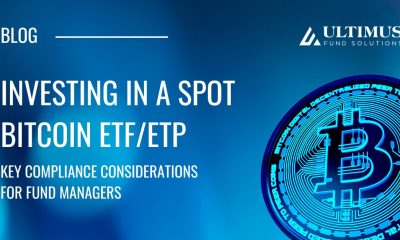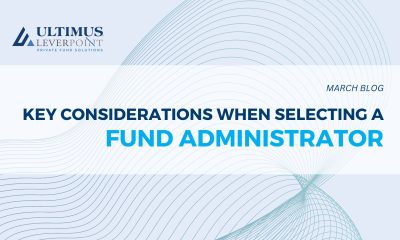In October 2016 the SEC adopted new rules, a new form and other amendments designed to promote effective liquidity risk management throughout the open-end investment company industry. The goal is to reduce the risk that funds will be unable to meet their redemption obligations and mitigate dilution of the interests of fund shareholders. The amendments also seek to enhance disclosure regarding fund liquidity and redemption practices.
The SEC adopted Rule 22e-4, the Liquidity Rule, requiring each registered open-end fund, including open-end ETFs but not money market funds, to establish a liquidity risk management program. The Liquidity Rule also requires principal underwriters and depositors of unit investment trusts to engage in a limited liquidity review.
There are different compliance dates for large entities ($1 billion or more in net assets under management) and for small entities (less than $1 billion in net assets under management) and varying compliance dates for each element of the Rule.
To help our readers understand the Liquidity Rule at a high level, we have outlined the key components and classifications that make up the rule.
Components of a Liquidity Risk Management Program
The Liquidity Rule defines “liquidity risk” as the risk that a fund could not meet requests to redeem shares issued by the fund without significant dilution of remaining investors’ interests in the fund.
A fund’s Program should be reasonably designed to assess and manage the fund’s particular liquidity risks and must incorporate certain specified elements:
– assessment, management, and periodic review of the fund’s liquidity risk
– classification of the liquidity of each of the fund’s portfolio investments, as well as at-least-monthly reviews of the fund’s liquidity classifications
– determining and periodically reviewing a highly liquid investment minimum—the percentage of its net assets that the fund invests in highly liquid investments
– limiting the fund’s investment in illiquid investments to no more than 15% of the fund’s net assets
– for funds that engage in, or reserve the right to engage in, redemptions in kind, the establishment of policies and procedures regarding how they will engage in such redemptions in kind
The Program must consider certain liquidity risk factors both during normal and reasonably foreseeable stressed conditions, as described below.
Assessment, Management, and Review of Liquidity Risk
Each fund is required to assess, manage, and review, at least annually, its liquidity risk, considering the following factors:
– Investment strategy and liquidity of portfolio investments during both normal and reasonably foreseeable stressed conditions (including whether the investment strategy is appropriate for an open-end fund, the extent to which the strategy involves a relatively concentrated portfolio or large positions in particular issuers, and the use of borrowings for investment purposes and the use of derivatives)
– Short-term and long-term cash flow projections during both normal and reasonably foreseeable stressed conditions
– Holdings of cash or cash equivalents, as well as borrowing arrangements and other funding sources
Classification of the Liquidity of Fund Portfolio Investments
Each fund is required to classify the liquidity of each portfolio investment based on the number of days within which the fund determines that it reasonably expects an investment would be convertible to cash (or, for the less-liquid and illiquid categories, sold or disposed of) in current market conditions without such conversion (or, for less-liquid and illiquid categories, such sale or disposition) significantly changing the market value of the investment. The four liquidity categories for classification of portfolio investments, including derivatives transactions, are:
– Highly liquid investments – cash and any investment reasonably expected to be convertible to cash in current market conditions in three business days or less
– Moderately liquid investments – any investment reasonably expected to be convertible to cash in current market conditions in more than three calendar days but in seven calendar days or less
– Less liquid investments – any investment reasonably expected to be sold or disposed of in current market conditions in seven calendar days or less, but where the sale or disposition is reasonably expected to settle in more than seven calendar days
– Illiquid investments – any investment that may not reasonably be expected to be sold or disposed of in current market conditions in seven calendar days or less
The Liquidity Rule generally permits a fund to, as a starting point, classify the liquidity of its portfolio investments according to their asset class. However, the fund must separately classify any investment if the fund’s adviser has information about any market, trading, or investment-specific considerations that are reasonably expected to significantly affect the liquidity characteristics of that investment as compared to the fund’s other portfolio holdings within that asset class.
The SEC’s adopting release presents (but does not codify) certain factors that must be taken into account, to the extent applicable, when classifying the liquidity of each portfolio position in a particular asset.
Determination of a Highly Liquid Investment Minimum
Each fund that does not primarily hold assets that are highly liquid investments must determine its “highly liquid investment minimum,” which is the percentage of the fund’s net assets that the fund invests in highly liquid investments. In general, a fund must consider, as applicable, the same factors considered in assessing its liquidity risk when determining its highly liquid investment minimum. The highly liquid investment minimum is to be reviewed no less frequently than annually.
Each fund must adopt and implement policies and procedures for responding to a shortfall in a fund’s highly liquid investments below its highly liquid investment minimum. These must include:
– reporting the shortfall to its board of directors, no later than the board’s next regularly scheduled meeting;
– reporting to its board within one business day if the shortfall lasts more than seven consecutive calendar days; and
– submission of a non-public report to the SEC through Form N-LIQUID, if the shortfall lasts more than seven consecutive calendar days.
Limitation on Illiquid Investments
The Liquidity Rule prohibits a fund from acquiring any illiquid investment if, immediately after the acquisition, the fund would have invested more than 15% of its net assets in illiquid investments.
In circumstances where a fund’s illiquid investments exceed 15% of its net assets (including when such investments appreciate in value to greater than 15% of the fund’s net assets):
– the fund must notify its board, and confidentially the SEC through Form N-LIQUID
– the program administrator must explain in a report to the board the extent and causes of the occurrence, and how the fund plans to bring its illiquid investments to or below 15% of its net assets within a reasonable period of time
– if the amount of the fund’s illiquid investments is still above 15% of its net assets 30 days from the occurrence (and at each consecutive 30-day period thereafter), the board of directors must assess whether the plan presented to it continues to be in the best interest of the fund
Board Oversight
In addition to receiving reports on any shortfalls of a fund’s highly liquid investments compared to its minimum and on any circumstances where a fund’s illiquid investments exceed 15% of its net assets, a fund Board has the following responsibilities:
1. Initially approve, but not design, the Liquidity Program
2. Approve the fund’s designation of the fund’s investment adviser or officers as responsible for administering the day-to-day aspects of the Liquidity Program
3. Review, no less frequently than annually, a written report addressing the operation, adequacy and effectiveness of, and any material changes to, the Liquidity Program and including a discussion of the fund’s highly liquid investment minimum
Additional Disclosure and Reporting Requirements
The SEC also adopted amendments to Form N-1A regarding the disclosure of fund policies concerning the redemption of fund shares. Certain sections of the new Forms N-PORT and N-CEN will require disclosure of certain information regarding the liquidity of a fund’s holdings and the fund’s liquidity risk management practices.
In its annual or semiannual reports to shareholders, a fund must include a discussion of the operation and effectiveness of its liquidity program based upon the annual written report provided to the Board.
Summary of Compliance Dates
*Note that for the period June 1, 2018 through February 28, 2019, larger entities must maintain records
for data required for Form N-PORT, even though the Form will not be filed with the SEC.
While we have provided a summary of the Liquidity Rule, for complete information we also encourage you to read the adopting releases and the SEC’s FAQs:
– October 2016 Release
– February 2018 Release
– June 2018 Release
– Current FAQs (issued by the SEC)
With this overview we’ve attempted to provide a helpful summary of the Liquidity Rule. This rule is complicated and can take time to fully understand, not to mention the time and effort involved in establishing a plan to implement them. With the help of an informed service provider or compliance consultant, advisers can develop a reasonably designed program for their funds. However, keep in mind that the Liquidity Rule’s compliance dates are fast approaching. The compliance professionals at Ultimus would be delighted to answer any questions you may have about developing liquidity programs.



